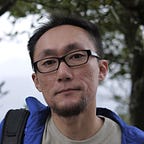Difficulties in Assessing Participation in Photography
How do we capture the process of photography?
Readers will probably realize that I do not know enough about photography to assess participation in photography. This is exactly my point, whereas assessment for many other artforms has greater similarity, photography is different. I welcome any literature that suggests assessment methods.
Recently I had a chat with a photographer who do participatory work in community projects. It was a conversation about how to assess projects that use photography.
Assessing participatory projects
When assessing a project where people are facilitated to draw, there are a number of things happening in the process. Here are some of them that are often observed and compared overtime:
- Comfort and ease with brushes and paints
- Interpretation of subject and content (intellectually, aesthetically, emotionally…)
- Engagement with facilitator and fellow participants (again, socially, intellectually, aesthetically, emotionally…)
- Conversation content and attitudes
- Body language (in general, and in the action of painting)
- Works (of art) in progress
If you substitute point 1 with various artistic tools, which includes our bodies, site or scripts, the list can apply to most community arts with music, theatre and dance.
When we look for ‘evidence’ that people has actually done or experienced something, the aforementioned forms have much to offer. True, things also happen mentally, but (a) the thinking is often encouraged to be experimented physically and (b), the thinking is often inseparable with the doing. As a result, the see-able process informs the assessors’ understanding of what is also happening mentally.
But photography is different.
How do you assess participation in photography?
I have always wanted to have a photography component in the participatory workshops I design. From my own experience, the process of taking photos is very introspective and reserved, and demands a meticulousness that is often missing in the energetic engagements, collaborations and momentum towards resolutions in collaborative painting and music-making.
What is there to observe when participants are taking photos? Painting is highly performative (and obviously so are the performing arts), but photography is much less so. I wonder, even to seasoned photographer, do body languages show readily when one takes a photo.
When and where are the works made? Participants in visual art mostly only make it during and at the workshop. For theatre, dance and music, participants can practice at home, but the workshop probably is when most of it happen. But for photography, participants are often assigned a topic to work on over the week; to take photos of ones’ friends, neighbourhood or somewhere in the wild. Instead, the photography workshop is mostly a time to share and discuss each others’ work.
Implications and Further
When assessing participants and their painting, their behaviours during the painting process gives us some clue to the meaning of the painting for that person. Instead, photography gives us snapshots of progress.
Very practically speaking, this is more convenient for the assessor. However, this means that much of the non-verbal clues are no longer recorded. Imagine seeing the focus, joy or weariness during a drama practice. But with written records or oral discussion a few days after the photos were taken, these observations are lost. Moreover, it also means that the data do not lend itself to easy comparison with other art forms in participatory processes.
Stepping back, this discussion has illuminated the complexity of assessing the community arts. As mentioned above, photography workshop brings about a very different kind of participation marked by an introspective process, which are an essential part of the personal and interpersonal experience. In the video presentation, “Sounding Outward — Looking Inward”, by Dr. Gerard Yun, he proposed that the community arts practice cannot always be outward looking, and that it needs to have an inward looking dimension.
Introspective components is often not emphasized in community arts project. Most often, projects are funded on the promises of visible social boding, diversity and positivity; and alongside, assessment methods designed to identify and explain them. Photography offers participatory arts a very important complementary tool. But how do we account for it in our assessments? How do we identify and assess the various forms and manifestations of these introspections?
